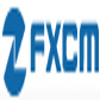Edit Your Comment
Oanda versus FXCM
Členom od Sep 20, 2014
365 príspevkov
Dec 09, 2014 at 13:43
Členom od Sep 20, 2014
365 príspevkov
@moneycoder
High volatility periods happen a lot less than normal volatility periods. We're talking 20/80 here, so it's the wrong thing to focus on. I've posted a link to costs including commission in a normal session. It was done by somebody whose been making a living trading full auto for the last decade, so those figures are as good as it's going to get.
As for O's model, what they do is they take their entire book and square it. They set off buys against sells on all pairs for all clients, whatever is left they go hedge in the open market so they don't carry risk. They have no interest in your positions other than they are part of the aggregate. They have no incentive for you to lose, and if you do lose and stop trading they stop getting spread.
It's as simple as that. As I said, they are not a MT bucket shop. They're not ECN either, but rather a unique execution of the FX business model.
High volatility periods happen a lot less than normal volatility periods. We're talking 20/80 here, so it's the wrong thing to focus on. I've posted a link to costs including commission in a normal session. It was done by somebody whose been making a living trading full auto for the last decade, so those figures are as good as it's going to get.
As for O's model, what they do is they take their entire book and square it. They set off buys against sells on all pairs for all clients, whatever is left they go hedge in the open market so they don't carry risk. They have no interest in your positions other than they are part of the aggregate. They have no incentive for you to lose, and if you do lose and stop trading they stop getting spread.
It's as simple as that. As I said, they are not a MT bucket shop. They're not ECN either, but rather a unique execution of the FX business model.
Členom od Aug 12, 2009
272 príspevkov
Dec 10, 2014 at 01:43
(upravené Dec 10, 2014 at 01:56)
Členom od Aug 12, 2009
272 príspevkov
TomD131 posted:gatoreyefx posted:
How they make their profits:
----------------------------------
Oanda is a Market Maker who makes their profit on the spread. Their average spread is around 1.3 pips.
FXCM on the other hand is a STP broker with tight spreads, who makes their profit on commissions charged on each trade.
ge
While this is true, this is not the entire picture. Oanda, being a market maker, makes profits on clients' losses, not just the spread. FXCM makes profits on any spread markup that they do (if any) as well as their relatively high commissions.
Hi Tom,
Just to clarify, on our old pricing model, there were no commissions. Instead, we used to make our profits from a fixed pip markup that used to be included in the spread. That changed when FXCM introduced a new raw FX spread pricing model.
FXCM makes no profit from any spread markup on this new pricing. Instead, we make our money from the commissions. Furthermore, as you can see from the live forex broker spreads page here on Myfxbook, our new pricing with raw FX spreads and commissions compares very favorably with other firms: https://www.myfxbook.com/forex-broker-spreads
In addition to being very competitive in terms of transaction costs, FXCM's new pricing provides you with greater transparency. We make no money from our raw FX spreads, since any spread costs you pay go straight to the liquidity providers. Our profit comes from the commissions, so you know the exact amount FXCM is charging you to place your trades through us.
Perhaps most importantly, our No Dealing Desk (NDD) forex execution means we offset each of your orders one-for-one with the best prices from 10+ competing liquidity providers. Since we don't take the market risk on the other side of your trades, we don't profit from your losses or lose from your profits. Instead, we make our money from your trading volume. This aligns our interests with yours, and we want you to have a long successful trading career.
Členom od May 16, 2014
6 príspevkov
Dec 10, 2014 at 07:27
Členom od May 16, 2014
6 príspevkov
I stand corrected. I was wrong on my observation that Oanda halts trade during high volatility times. That is not true. I forgot the fact that my app rejects any incoming quotes higher than 2.5 pips. My apologies!
Don't tell me it's not possible.
Členom od Dec 08, 2014
2 príspevkov
Dec 10, 2014 at 15:44
Členom od Dec 08, 2014
2 príspevkov
fxBlue has good, unbiased comparison data: https://www.fxblue.com/spread/symbol.aspx.
However, always consider that the spread is just part of the overall cost of trading. For example, consider OANDA’s 1.3 EUR/USD spread versus a competitor’s 0.3 spread plus $0.50 per mini-lot transaction. That is the equivalent of +1.0 on the spread, which essentially means that their advertised spread is only 17% of your actual trading cost, with commissions making up the other 83%.
However, always consider that the spread is just part of the overall cost of trading. For example, consider OANDA’s 1.3 EUR/USD spread versus a competitor’s 0.3 spread plus $0.50 per mini-lot transaction. That is the equivalent of +1.0 on the spread, which essentially means that their advertised spread is only 17% of your actual trading cost, with commissions making up the other 83%.
Členom od Aug 12, 2009
272 príspevkov
Dec 10, 2014 at 21:03
(upravené Dec 10, 2014 at 21:16)
Členom od Aug 12, 2009
272 príspevkov
You can find unbiased comparison data right here on Myfxbook. Below is a spread comparison of US brokers that includes commissions. Click here for the live table: https://www.myfxbook.com/forex-broker-spreads

As you can see above, even when you include commissions, FXCM's spreads are very competitive. Aside from low transaction costs, there are other advantages to our pricing model.
1. Transparency: With our raw FX spreads and transparent commissions, you know the exact amount FXCM charges you to place a trade.
This model is similar to what you find in equities and futures trading. Just as with brokers in those markets, FXCM is compensated by the commission. Each order you place on our No Dealing Desk (NDD) forex execution is offset one-for-one with the best available prices from 10+ competing liquidity providers, and any spread cost you pay goes straight to them.
Incidentally, our average EUR/USD spread is 0.2 pips, and the commission is $0.40 per mini-lot transaction. That means on the average EUR/USD mini-lot trade, you would pay 20 cents in spread cost to the liquidity providers, and 80 cents in commission (40 cents for opening, and 40 cents for closing) to FXCM. That's a total transaction cost of $1.00 for your mini-lot trade or the equivalent of 1 pip.
With our NDD execution, there are no re-quotes , no dealer intervention, and your orders are anonymous to the liquidity providers who quote the prices for your orders. This eliminates the conflicts of interest that can exist with a market maker that has control over your pricing and could be taking the market risk on the other side of your trades to potentially profit from your losses or lose from your profits.
2. Raw Bid and Ask Prices: No markups on the bid or ask prices received from liquidity providers mean that raw FX spreads provide execution benefits to both your stop and limit orders that are not available with brokers that markup the spread instead of charging you a separate commission.
For example, suppose that for a long EUR/USD position, you have a stop loss set at 1.24750. If instead of a commission, we included the equivalent 0.4 pip markup to the bid prices from our liquidity providers, your stop could be triggered at 1.24750 even if the raw bid price only went as low as 1.24754 (still 0.4 pips above your stop). By contrast, with FXCM's raw FX spreads, your trade would not get stopped out in this scenario.
As another example, suppose you had a limit (take profit) order for this EUR/USD long position set at 1.25750. If instead of a commission, we included the equivalent 0.4 pip markup to the ask prices from our liquidity providers, your limit orders could not be triggered at 1.25750 even if the raw bid price went to that level, since the markup would mean the bid price on your platform only reached 1.25746 (still 0.4 pips below your limit). By contrast, with FXCM's raw FX spreads, your limit order would get triggered in this scenario.

As you can see above, even when you include commissions, FXCM's spreads are very competitive. Aside from low transaction costs, there are other advantages to our pricing model.
1. Transparency: With our raw FX spreads and transparent commissions, you know the exact amount FXCM charges you to place a trade.
This model is similar to what you find in equities and futures trading. Just as with brokers in those markets, FXCM is compensated by the commission. Each order you place on our No Dealing Desk (NDD) forex execution is offset one-for-one with the best available prices from 10+ competing liquidity providers, and any spread cost you pay goes straight to them.
Incidentally, our average EUR/USD spread is 0.2 pips, and the commission is $0.40 per mini-lot transaction. That means on the average EUR/USD mini-lot trade, you would pay 20 cents in spread cost to the liquidity providers, and 80 cents in commission (40 cents for opening, and 40 cents for closing) to FXCM. That's a total transaction cost of $1.00 for your mini-lot trade or the equivalent of 1 pip.
With our NDD execution, there are no re-quotes , no dealer intervention, and your orders are anonymous to the liquidity providers who quote the prices for your orders. This eliminates the conflicts of interest that can exist with a market maker that has control over your pricing and could be taking the market risk on the other side of your trades to potentially profit from your losses or lose from your profits.
2. Raw Bid and Ask Prices: No markups on the bid or ask prices received from liquidity providers mean that raw FX spreads provide execution benefits to both your stop and limit orders that are not available with brokers that markup the spread instead of charging you a separate commission.
For example, suppose that for a long EUR/USD position, you have a stop loss set at 1.24750. If instead of a commission, we included the equivalent 0.4 pip markup to the bid prices from our liquidity providers, your stop could be triggered at 1.24750 even if the raw bid price only went as low as 1.24754 (still 0.4 pips above your stop). By contrast, with FXCM's raw FX spreads, your trade would not get stopped out in this scenario.
As another example, suppose you had a limit (take profit) order for this EUR/USD long position set at 1.25750. If instead of a commission, we included the equivalent 0.4 pip markup to the ask prices from our liquidity providers, your limit orders could not be triggered at 1.25750 even if the raw bid price went to that level, since the markup would mean the bid price on your platform only reached 1.25746 (still 0.4 pips below your limit). By contrast, with FXCM's raw FX spreads, your limit order would get triggered in this scenario.
Členom od Oct 19, 2014
18 príspevkov
Dec 11, 2014 at 07:21
Členom od Oct 19, 2014
18 príspevkov
I do have another question in regards to both Oanda and FXCM. From this thread it looks like both pass the position to a third party thereby eliminating direct conflict of interest with the trader. I say 'direct' conflict of interest because of course there is still possible ways to to have indirect conflicts of interest, such as third party 'kick backs' and adjustments coming back to the broker, depending on outcomes of trades etc.
An auto dealer for example can sell you a car at cost and state they didn't make a dime from you. However the auto factory compensates the dealer for the sale, so they indirectly did make a profit from your purchase. And the same could be structured into a Broker /3rd party liquidity provider relationship. So if the Third party liquidity sources are profiting or losing, it's conceivable a compensatable relationship does exist.
It's easy for algo's to flag accounts and add millisecond delays, or slight spread adjustments, or routing preferences to those accounts imo.
I'm not suggesting it IS occurring, only that it could conceivably be occurring..
I think this thread has been helpful, at least to myself. I've learned a lot from the posters and the reps.
thanks
JOhn
An auto dealer for example can sell you a car at cost and state they didn't make a dime from you. However the auto factory compensates the dealer for the sale, so they indirectly did make a profit from your purchase. And the same could be structured into a Broker /3rd party liquidity provider relationship. So if the Third party liquidity sources are profiting or losing, it's conceivable a compensatable relationship does exist.
It's easy for algo's to flag accounts and add millisecond delays, or slight spread adjustments, or routing preferences to those accounts imo.
I'm not suggesting it IS occurring, only that it could conceivably be occurring..
I think this thread has been helpful, at least to myself. I've learned a lot from the posters and the reps.
thanks
JOhn
Don't give up.
Členom od Sep 20, 2014
365 príspevkov
Dec 11, 2014 at 07:36
Členom od Sep 20, 2014
365 príspevkov
@moneycoder
John you need to look a bit past that. MF Global comes to mind.
It's my opinion that Oanda is in fact in very deep shit. Wether they can turn it around remains to be seen (they have new management), but they have very few positive months in their cash flow. They've burned through $100 000 000 in 18 months with nothing to show for it, just a bunch of cancelled products and the failed purchase of Currensee being the last one.
They still think their spread is competitive as you can see by their response here when it clearly isn't. And they've ruined the flags ship product with deliberate delays in order execution and trade restrictions.
I have serious reservations about their long term survival, and I'm not alone. If they continue to burn cash the way they currently are they will not make another year.
I don't know what state FXCM is in, but Oanda for now you have to very cautious about, till the new management can prove that they have even a vague idea what they're doing.
John you need to look a bit past that. MF Global comes to mind.
It's my opinion that Oanda is in fact in very deep shit. Wether they can turn it around remains to be seen (they have new management), but they have very few positive months in their cash flow. They've burned through $100 000 000 in 18 months with nothing to show for it, just a bunch of cancelled products and the failed purchase of Currensee being the last one.
They still think their spread is competitive as you can see by their response here when it clearly isn't. And they've ruined the flags ship product with deliberate delays in order execution and trade restrictions.
I have serious reservations about their long term survival, and I'm not alone. If they continue to burn cash the way they currently are they will not make another year.
I don't know what state FXCM is in, but Oanda for now you have to very cautious about, till the new management can prove that they have even a vague idea what they're doing.
Členom od Aug 12, 2009
272 príspevkov
Dec 11, 2014 at 16:43
(upravené Dec 11, 2014 at 16:44)
Členom od Aug 12, 2009
272 príspevkov
moneycoder posted: From this thread it looks like both pass the position to a third party thereby eliminating direct conflict of interest with the trader.
Not necessarily.
A broker acting as the market maker aggregates clients orders and MAY offset those positions thereby hedging the trades and eliminating the conflict of interest. It’s the broker’s choice whether to hedge the positions. If any positions are not hedged, it leaves open the potential for conflict of interest.
You may ask yourself: ‘Isn’t a market maker simply trying to capture the spread?’ In order for this to happen the buy and sell order volume has to be equal at all times in order to capture the spread perfectly. If you take a look at directional volume data, you’ll find thatthis is not always the case. A good example of this can be seen on USD/JPY during today’s US Retail Sales release. During the 3 minute period I highlight in the chart below showing the directional real volume of FXCM clients, there were roughly 32 million in buy orders and 7 million in sell orders. The market can often become one-sided as in the example and a market maker either has to take on that risk and manage the aggregate positioning over time or widen the spread.

*NOTE: this indicator is available on Trading Station Mobile and will be available in a future release of Trading Station Desktop.
With FXCM’s NDD forex execution, every order is offset immediately. There’s no question whether the conflict of interest is eliminated. And one sided volume volume such as the above doesn’t impact us since we’re compensated based on commissions from order volume and pricing is automatically based on the best bid/ask prices from competing market makers.
Regarding your question about indirect conflict of interest, FXCM does not receive compensation for order flow. Our compensation is the commission on each forex order. Our commission and the liquidity providers spread in the spread + commission model provides transparency similar to what traders are familiar with in equities and futures.
We're happy you find the thread helpful!
Jason
Členom od Aug 12, 2009
272 príspevkov
Dec 11, 2014 at 16:53
Členom od Aug 12, 2009
272 príspevkov
theHand posted:
I don't know what state FXCM is in...
Hi @theHand
FXCM is a publicly traded company so you can see our financial data and compare over time using the financial reports found at https://ir.fxcm.com . Our ticker symbol on the New York Stock Exchange is FXCM. As of our latest 10-Q filing from November, FXCM had $326 million in cash. Our clients held roughly $1.3 billion in their accounts, and the operating metrics release this past Tuesday showed there were 188,740 active accounts during the month of November.
Jason
Členom od Sep 20, 2014
365 príspevkov
Dec 12, 2014 at 05:49
(upravené Dec 12, 2014 at 06:11)
Členom od Sep 20, 2014
365 príspevkov
@jasonrogers
The only reason I don't have a FXCM account is your trade sizes. I was supposed to become a client with IBFX's demise, but declined the transfer and shifted my focus (and money) to Oanda's API.
The main difference is to test ideas live, with O I can put down $1k and trade 1 unit trades if I have to, with you I'd have to put down $10k to do the same test. Then of course if the test does work I already have the code for O so I just use them.
You guys should look at having account types that can be used like this. 10 000 unit lots and 0.01 as IBFX had it would be good enough.
In fact I was contemplating opening an Instaforex account the other day, but their reputation is so bad I just couldn't bring myself to do it. At this point in time for that kind of testing and developing Oanda is really the only broker I can use and the more I use the API the less likely I am to change my methods later.
The only reason I don't have a FXCM account is your trade sizes. I was supposed to become a client with IBFX's demise, but declined the transfer and shifted my focus (and money) to Oanda's API.
The main difference is to test ideas live, with O I can put down $1k and trade 1 unit trades if I have to, with you I'd have to put down $10k to do the same test. Then of course if the test does work I already have the code for O so I just use them.
You guys should look at having account types that can be used like this. 10 000 unit lots and 0.01 as IBFX had it would be good enough.
In fact I was contemplating opening an Instaforex account the other day, but their reputation is so bad I just couldn't bring myself to do it. At this point in time for that kind of testing and developing Oanda is really the only broker I can use and the more I use the API the less likely I am to change my methods later.
Členom od Aug 12, 2009
272 príspevkov
Dec 12, 2014 at 14:31
Členom od Aug 12, 2009
272 príspevkov
theHand posted:
You guys should look at having account types that can be used like this. 10 000 unit lots and 0.01 as IBFX had it would be good enough.
@theHand
You make a fair point. Our minimum trade size is 1 micro lot (10 cents per pip) which may not be suitable for smaller account balances. That's why the minimum to open an FXCM account is $2000. However, there is an important reason for these minimums.
A micro lot (equivalent to 1000 currency units) is the smallest trade size that can be offset immediately with the liquidity providers on our No Dealing Desk (NDD) forex execution. A smaller trade size would require us to take the market risk on the other side of client trades. That's a conflict of interest FXCM would rather avoid.
It's worth noting that when we first introduced NDD back in 2007, the smallest trade size that could be offset with liquidity providers was 1 mini lot ($1 per pip). In 2010, FXCM was able to negotiate with banks to get that lowered to 1 micro lot. So who knows? Maybe in the future we will be able to offer NDD execution on smaller trade sizes. 😄
Členom od Feb 22, 2011
4862 príspevkov
Dec 12, 2014 at 14:38
Členom od Feb 22, 2011
4862 príspevkov
moneycoder posted:
Any comments or experiences please share. I don't see any Oanda reviews on this site. Looking for good USA broker.
Thanks
As far as I know Oanda has pathetic leverage which limits your profit just way too much.
Členom od Sep 05, 2013
50 príspevkov
Dec 12, 2014 at 22:00
Členom od Sep 05, 2013
50 príspevkov
theHand posted:
@jasonrogers
You guys should look at having account types that can be used like this. 10 000 unit lots and 0.01 as IBFX had it would be good enough.
transfer from IBFX was painless. IBFX had nano trading - FXCM has micro trading. i like their fixed margins, transaction fees, and execution speed. the best broker by far. two words: DEMO ACCOUNT
“Everybody should have a dream. What if that dream comes true?” – Jack Ma
Členom od Sep 20, 2014
365 príspevkov
Dec 13, 2014 at 06:08
(upravené Dec 13, 2014 at 06:32)
Členom od Sep 20, 2014
365 príspevkov
@240Z
The difference is actually more significant than it first appears to be, I can compound x1000 faster on Oanda. Looking at a few hundred percent difference over a year or two. I did a demo with FXCM, but as I said, trade sizes is what clenched it, if I had $100k lying around sure I'd also open a FXCM account, but with what I have in the market today it's just better to focus on the guy that lets me compound the fastest.
@togr
I very seriously doubt you can use more than Oanda's pathetic leverage and survive long term.
@everyone else
The answer to this question is most likely you need accounts with both depending on portfolio size. As a rule anyway you should have multiple brokers with multiple base currencies in your portfolio. In fx the leverage is barely usable anyway (so it isn't a deciding factor), the main use of it is to reduce counter party exposure (including to the banks which are sitting on over a trillion dollars derivative bomb). You never know what risk a broker has on the table, regardless what their figures look like, again MF Global is an example.
For me the deciding factors in order of priority are:
1. Reputation
2. Minimum Trade sizes
3. Geographical location (I prefer brokers in Asia and Australia)
4. Tech (stable connectivity, how fast can I get out of everything)
5. Spread
In fact spread almost doesn't matter. Last bloody thing I care about.
The difference is actually more significant than it first appears to be, I can compound x1000 faster on Oanda. Looking at a few hundred percent difference over a year or two. I did a demo with FXCM, but as I said, trade sizes is what clenched it, if I had $100k lying around sure I'd also open a FXCM account, but with what I have in the market today it's just better to focus on the guy that lets me compound the fastest.
@togr
I very seriously doubt you can use more than Oanda's pathetic leverage and survive long term.
@everyone else
The answer to this question is most likely you need accounts with both depending on portfolio size. As a rule anyway you should have multiple brokers with multiple base currencies in your portfolio. In fx the leverage is barely usable anyway (so it isn't a deciding factor), the main use of it is to reduce counter party exposure (including to the banks which are sitting on over a trillion dollars derivative bomb). You never know what risk a broker has on the table, regardless what their figures look like, again MF Global is an example.
For me the deciding factors in order of priority are:
1. Reputation
2. Minimum Trade sizes
3. Geographical location (I prefer brokers in Asia and Australia)
4. Tech (stable connectivity, how fast can I get out of everything)
5. Spread
In fact spread almost doesn't matter. Last bloody thing I care about.
Členom od Aug 12, 2009
272 príspevkov
Dec 16, 2014 at 22:42
(upravené Dec 16, 2014 at 22:44)
Členom od Aug 12, 2009
272 príspevkov
theHand posted:
I prefer brokers in Asia and Australia
@theHand
You make a fair point about trade sizes. The minimum trade size with FXCM is 1 micro lot (10 cents per pip), since that's the smallest amount that can be offset one-for-one with liquidity providers on No Dealing Desk (NDD) forex execution.
However, you mentioned that you prefer brokers in Asia and Australia, so you might still be interested to know that FXCM is regulated in Japan, Hong Kong and Australia
Členom od Oct 03, 2012
69 príspevkov
Dec 17, 2014 at 04:08
Členom od Oct 03, 2012
69 príspevkov
Do either of these brokers provide premium swaps for long term traders ?
@jasonrogers what are the requirements for a swap free account if I come from a muslim country ?
@jasonrogers what are the requirements for a swap free account if I come from a muslim country ?
The market will go up, failing which, it will go down.
Členom od Mar 31, 2014
8 príspevkov
Dec 17, 2014 at 14:51
Členom od Mar 31, 2014
8 príspevkov
Oanda is a bucket shop (market maker). Stay away from them.
I like FXCM but their commission is quite expensive if you're a scalper.
I like FXCM but their commission is quite expensive if you're a scalper.
IDGAF
Členom od Oct 03, 2012
69 príspevkov
Dec 17, 2014 at 15:14
(upravené Dec 17, 2014 at 15:14)
Členom od Oct 03, 2012
69 príspevkov
I'm not bothered if they're a market maker if I can get away with little or no swaps. I paid over USD5K in swaps in my last trading cycle (3months)...:(
The market will go up, failing which, it will go down.
Členom od Aug 12, 2009
272 príspevkov
Dec 17, 2014 at 23:28
Členom od Aug 12, 2009
272 príspevkov
wlk1 posted:
@jasonrogers what are the requirements for a swap free account if I come from a muslim country ?
@wlk1 there is a special application you would have to complete. If you send me a private message with your contact details, I can have an account specialist follow up with you regarding this.
Členom od Aug 12, 2009
272 príspevkov
Dec 17, 2014 at 23:36
(upravené Dec 17, 2014 at 23:38)
Členom od Aug 12, 2009
272 príspevkov
evolutioncapital posted:
I like FXCM but their commission is quite expensive if you're a scalper.
@evolutioncapital below is a spread comparison of US brokers that includes commissions. Click here for the live table: https://www.myfxbook.com/forex-broker-spreads

As you can see above, even when you include commissions, FXCM's spreads are very competitive. Furthermore, on our No Dealing Desk (NDD) forex execution model, we make money off your trading volume, not your losses. This business model means that scalpers are some of our best clients because of the trading volume they generate. If your monthly volume exceeds 50M notional, you can qualify for discounts on commissions which mean even lower transaction costs than you see above.
If you would like to hear more about these commission discounts and other benefits available to active traders, please email [email protected]

*Komerčné použitie a spam nebudú tolerované a môžu viesť k zrušeniu účtu.
Tip: Uverejnením adresy URL obrázku /služby YouTube sa automaticky vloží do vášho príspevku!
Tip: Zadajte znak @, aby ste automaticky vyplnili meno používateľa, ktorý sa zúčastňuje tejto diskusie.

















